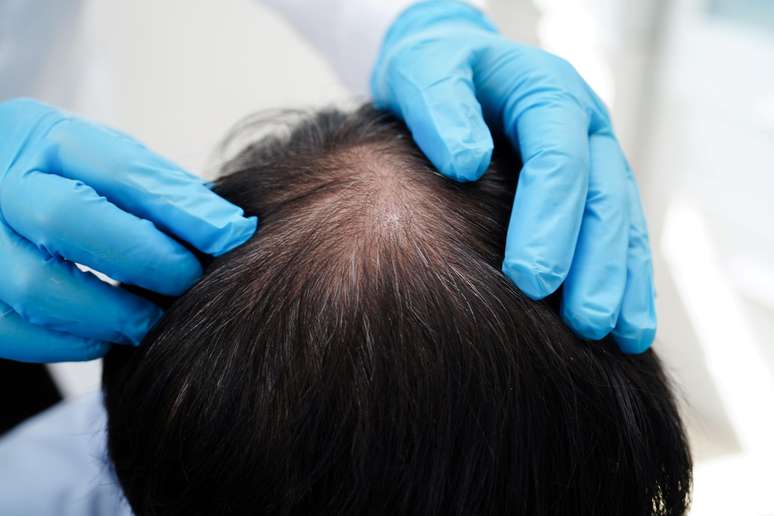Experts warn that it is too much to recommend the procedure
EINSTEIN AGENCY – Almost 10 years ago the Ministry of Health created a protocol that makes it mandatory to carry out “tongue test” in maternity wards for all newborns. The lingual frenum evaluation protocol aims to identify the presence of ankyloglossia, a congenital problem that causes changes in the lingual frenulum From Child and that, in some cases, could interfere negatively with the breastfeeding.
The frenulum is a membrane located under the tongue, which functions as a sort of “ligament” with the lower cavity of the mouth, promoting the mobility of the tongue. In case of frenulum alterations, there may be repercussions on the baby’s breastfeeding, which can lead to anemia, low weight, irritability, exhaustion, long breastfeeding sessions, among others.
“The baby needs good tongue mobility to be able to properly grasp the mother’s breast during breastfeeding. If the frenulum is shorter, it is lower and more “in” the mouth. As a result, the baby’s tongue does not has sufficient mobility to reach the mother’s breast and completely extract the milk,” explained Natália Oliveira de Jesus, speech therapist at the Neonatal Intensive Care Unit (ICU), maternity and pediatrics at the Israelita Albert Einstein Hospital.
According to Oliveira, from the moment the baby encounters difficulties in breastfeeding, he loses his sucking strength and creates compensation mechanisms in other structures, such as cheeks and gums, to be able to breastfeed. For the mother, this can cause pain, increased breast sensitivity, abrasions and injuries during breastfeeding.
“With the change, the baby creates compensations in his movements to try to extract enough milk to feed himself. He begins to bite his mother’s breast with his gums because his tongue cannot reach the breast and make the correct movement. He begins he also exerts pressure with his cheek, the opposite of what we would like: instead of filling with milk, his cheek sinks in, creating dimples,” he explained.
According to Oliveira, the lesions caused to the maternal breast are very characteristic of the shorter frenulum: they usually appear in a horizontal line, in the center of the nipple and with abrasions on the areola. “We look at it closely and identify it as a possible change in the frenulum,” she says, pointing out that these breastfeeding compensation mechanisms appear very quickly due to incorrect “attachment” of the breast. Therefore, lesions usually appear within the first 24 hours after birth.
How to repair the frenulum?
Changes in the frenulum can be corrected with a simple and effective surgery, but only when correctly indicated – experts warn that it is an exaggeration to recommend the procedure.
According to Oliveira, the diagnosis usually occurs shortly after birth, when the nursing team and the pediatrician apply a protocol called Bristol, which classifies the structure of the frenulum on a scale of 1 to 7. The analysis includes, among other things, evaluating the position of the tongue when the baby cries and whether he sticks his tongue out or not. The lower the score on the scale, the greater the change in the frenulum.
Once this change has been identified, the speech therapist team is called to evaluate whether the child’s breastfeeding is functional or not and, only subsequently, to evaluate whether it is a surgical intervention. «If the baby’s breastfeeding is functional, and the newborn is able to express milk from the mother even with an altered frenulum, we monitor this breastfeeding. If there is no injury to the mother and the baby is able to breastfeed, the guidance is to follow up with the pediatrician to monitor the milk production, weight gain and development of the baby,” the speech therapist said.
If the mother has injuries and pain during breastfeeding, the case is re-evaluated to decide whether or not it is necessary to correct the frenulum. “We avoid recommending unnecessary surgery, even if it is a simple procedure,” the speech therapist explained.
The second phase of monitoring this child’s frenulum occurs during introduction of food – from six months of age. In some cases, explains Oliveira, due to the lack of mobility of the tongue, the child has difficulty chewing certain foods and manipulating these foods in the oral cavity. “In these cases, we consider the possibility of correcting it surgically. But, again: if the baby has gone through breastfeeding and the introduction of food without problems, we have no reason to recommend surgery,” he said.
The third stage is the time when the child start talking – and this is one of the concerns of parents, who fear that the child may have speech difficulties due to the shortened frenulum. “Many children develop speech normally even with an impaired frenulum. They will only become concerned about the problem in adulthood, when they notice some distortion in speech, some difficulty in oral presentations or relationships. They may have had a functioning frenulum all their life.. … everywhere, but in adult life it starts to bother you,” explains Oliveira.
There is no data on the percentage of children who have changes in the frenulum, nor how many undergo surgery. A Brazilian study, carried out in 2009, followed 260 school-age children (aged 6 to 12) and found that 18% of them had frenulum alterations and, of these, 75% had speech alterations. The guidance at the time was: when in doubt, correct everyone (surgically).
However, according to Oliveira, the study was conducted without considering external factors, such as socioeconomic conditions, parental education and the child’s health conditions, which can also lead to changes in speech and language development. There are no more current and larger studies that confirm this surgical necessity for adequate language development. “Only babies who really cannot breastfeed and who have significant changes undergo surgical correction. What we evaluate is the sucking function to see whether it is nourishing or not,” she said.
Types of surgical interventions
They exist two different surgical procedures:frenotomy, which is the partial removal of the frenulum, when the professional “frees” the membrane (the famous “pick”); and frenectomy, which is the total removal of the frenulum. Surgeries can be performed by a pediatric surgeon, ENT surgeon, or pediatric dentist, with little risk to the child.
“In general, it takes place within the nursery and also in the outpatient clinic, with local anesthesia. The operation lasts a few seconds and immediately the baby can go directly to the mother’s breast and calmly receive the next feeding,” he said Oliveira, underlining how much the post-operative period is quieter when the surgery is performed on newborns.
Oliveira says it is always necessary to weigh risks and benefits and, therefore, it is important that families are well informed about whether or not surgery is necessary, even when breastfeeding is classified as functional. Since it is a physical structure under the tongue, he explains that there are no exercises that can help loosen the frenulum spontaneously.
“We cannot stretch, lengthen or loosen the frenulum with exercises. What we do in cases where we do not recommend surgery is to work to strengthen the other structures of the child’s mouth, such as the cheeks and the tongue itself, so that it improves the her mobility and learning to breastfeed correctly,” she concluded.
The Brazilian Society of Pediatrics (SBP) is against mandatory examination in maternity wards and emphasizes the importance of this diagnosis being carried out by a qualified professional. In an official position published on its website, the body states that “a well-performed clinical examination and complete observation of nutrition may be sufficient for the diagnosis of ankyloglossia, without the need for a specific protocol for this evaluation and, much less therefore, due to the need for a law that requires its implementation.”
For SBP, it is necessary to establish rigorous criteria and evaluate the safety and effectiveness of surgical interventions to correct ankyloglossia, as well as discuss in more detail the follow-up flow of children diagnosed with this condition, mainly in the setting of the Unified Health System (SUS), guaranteeing intervention when necessary. “Every procedure that aims to intervene in the dynamics and success of breastfeeding must have very well-founded criteria, established and carefully analyzed by all the professional sectors involved”, she concludes.
Source: Terra
Ben Stock is a lifestyle journalist and author at Gossipify. He writes about topics such as health, wellness, travel, food and home decor. He provides practical advice and inspiration to improve well-being, keeps readers up to date with latest lifestyle news and trends, known for his engaging writing style, in-depth analysis and unique perspectives.








